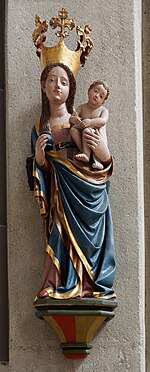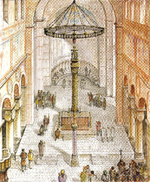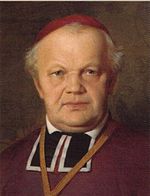Hezilo chandelier

The Hezilo chandelier (German: Heziloleuchter) is an 11th-century Romanesque wheel chandelier. It is part of the treasures of the Hildesheim Cathedral in Hildesheim, Germany, which has been a UNESCO World Cultural Heritage site since 1985. The chandelier was most likely commissioned by Bishop Hezilo of Hildesheim, who rebuilt the cathedral after a fire. He probably also influenced the program of imagery and inscriptions. It is the largest of four extant wheel chandeliers of the period; the others surviving examples are the Azelin chandelier (also in Hildesheim), the Barbarossa chandelier in the Aachen Cathedral, and the Hartwig chandelier in the Abbey of Comburg. During the restoration of the cathedral (from 2010 to 2014), the chandelier was installed in St. Godehard, a basilica since 1963 and the temporary bishop's seat. After the restoration of the cathedral, which reopened on 15 August 2014, it was returned to its original location in the cathedral's nave.
Excerpt from the Wikipedia article Hezilo chandelier (License: CC BY-SA 3.0, Authors, Images).Hezilo chandelier
Domhof, Hildesheim Altstadt (Stadtmitte/Neustadt)
Geographical coordinates (GPS) Address Website Nearby Places Show on map
Geographical coordinates (GPS)
| Latitude | Longitude |
|---|---|
| N 52.1489 ° | E 9.9464 ° |
Address
Hoher Dom St. Mariä Himmelfahrt
Domhof 17
31134 Hildesheim, Altstadt (Stadtmitte/Neustadt)
Lower Saxony, Germany
Open on Google Maps










